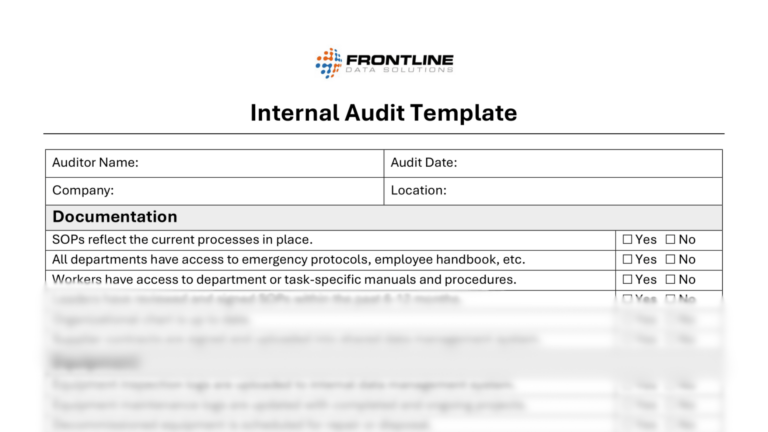Effective management of worker safety and health programs
The poster on the wall says “Safety First,” yet safety programs are often the first thing postponed or set aside. Priority gets placed on production, quality, and cost reduction and safety takes a back seat. There have been no reportable accidents in quite some time; so, all is well, right?
That false sense of security leads to a lack of caution. When the inevitable accident happens, the Managers are usually the most surprised. To be at all effective, a company’s safety program cannot be occasional or interruptible. It requires vigilance and dedication to keep the wolf away from the door.
Doing the right thing to protect employees and communities from harm should be sufficient reward in its own right; however, if management needs more persuasion, perhaps of the fiscal variety, consider the following benefits and advantages of maintaining comprehensive worker safety and health programs.
Free template!
Complete a simple audit with this template or change the line items for a more in-depth review.
Safety management programs create a productive workforce
Managers who adopt a complacent attitude toward safety instill that complacency in others. On the other hand, when the employees are shown true caring and commitment, they will typically respond in kind.
Safety programs encourage or even require employee involvement because, at least in part, they have a better understanding of the day-to-day hazards and conditions. By promoting full participation, Managers foster loyalty and better productivity from the workforce. The employees take more ownership, both on safety issues and on success of the business, with eyes and ears on the factory floor generating valuable feedback that decision makers can use.
Effective safety programs reduce costs
Whether it is one catastrophic accident or a string of smaller incidents, every event comes with a price. And, it’s not a matter of if, but when. Injuries, deaths, damaged facilities, environmental consequences, and infuriated communities can lead to enormous and far-reaching impacts on the company.
Costs of poor safety
Software can help make the MOC process both painless and robust.
- Litigation – both the process and the payout – may run into the millions or billions of dollars, with years taken to adjudicate.
- Insurance costs can easily skyrocket, due either to the incident itself or the recognition that an absent safety program could lead to recurrence.
- Expensive fines and penalties might be levied by federal and state agencies, not only for an accident, spill, or release, but also for failing to take adequate preventive steps.
- A company’s reputation can suffer irreparable harm with its effects felt in the stock market, in the ability to hire sufficient qualified staff, in financial institutions’ inclination to provide loans, and in the community’s willingness to overlook any future transgressions.
Benefits of safety excellence
Robust safety programs help to minimize these repercussions by reducing the opportunity for incidents before they occur or the effects if they transpire. For instance:
- Involved employees identify trending problems and the resources they need in an emergency.
- Mechanical integrity checks reduce equipment failure, damage, and downtime.
- Incident investigations decrease the chance of a repeat event.
- Process hazard analyses, system procedures, and training all help prepare the workforce to operate facilities safely and to react effectively when bad things happen.
When managers preach safety but are half-hearted in its execution, employees recognize the meaningless talk and become apathetic and unmotivated. This opens the door to accidents and incidents, all of which carry a cost in human suffering and/or monetary loss.
Employees need to know that safety is truly the top priority, symbolized by a strong, active safety program with commitment from the top. Yes, safety programs require an investment, but the benefits gained and the risks avoided are well worth it.
Other posts you might like…
No posts

